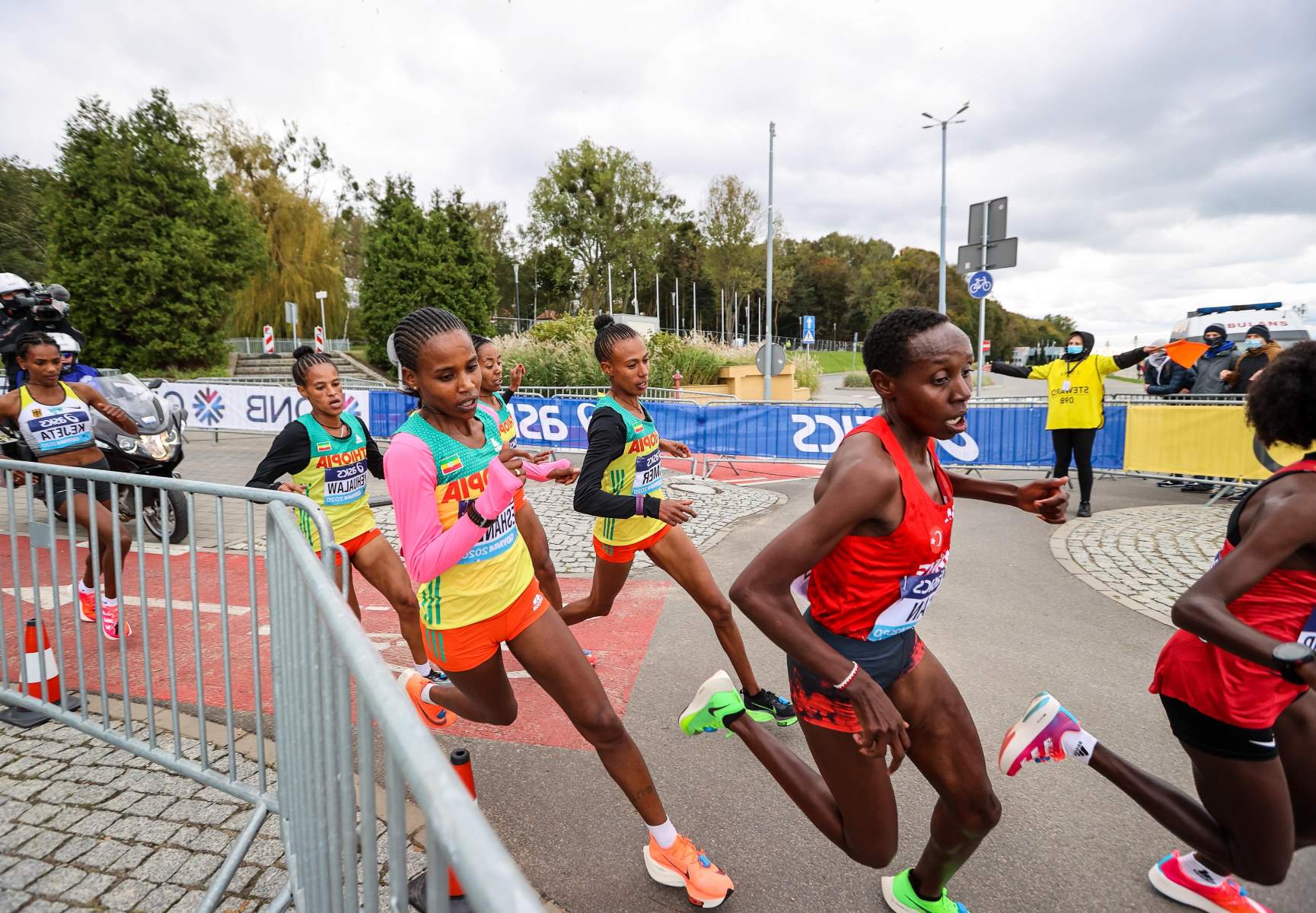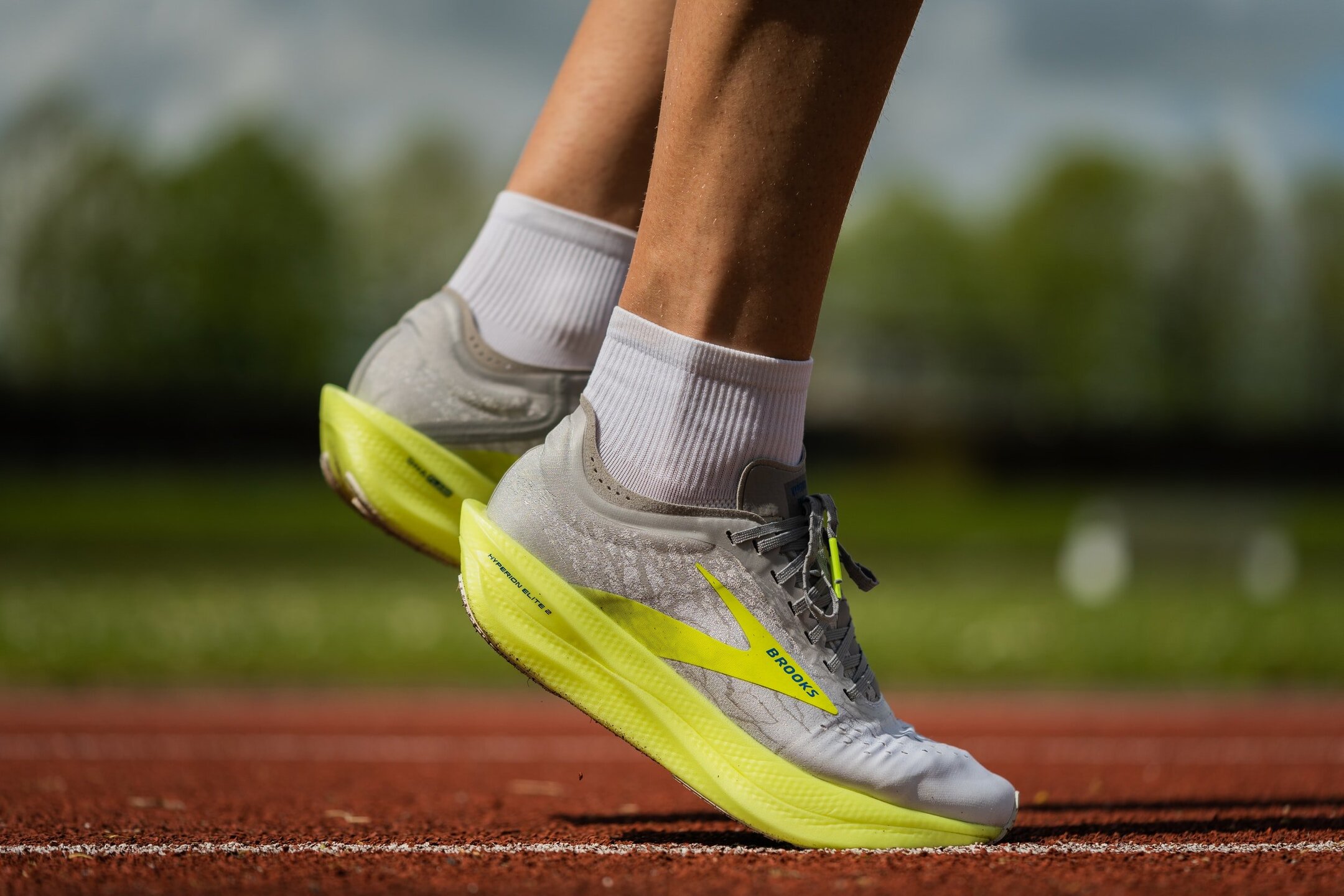Home>Health & Nutrition>Injury Prevention>Preventing Running Injuries: Essential Tips For A Safe And Successful Run


Injury Prevention
Preventing Running Injuries: Essential Tips For A Safe And Successful Run
Published: February 9, 2024
Learn essential tips for injury prevention to ensure a safe and successful run. Discover how to prevent running injuries and stay on track with your fitness goals.
(Many of the links in this article redirect to a specific reviewed product. Your purchase of these products through affiliate links helps to generate commission for Therunningadvisor.com, at no extra cost. Learn more)
Table of Contents
Importance of Injury Prevention
Injury prevention is a crucial aspect of any physical activity, especially when it comes to running. Whether you are a seasoned runner or just starting out, understanding the significance of injury prevention is paramount to ensuring a safe and successful running experience.
Running is a high-impact activity that places significant stress on the body, particularly the lower limbs and joints. Without proper precautions, the repetitive nature of running can lead to a myriad of injuries, ranging from minor strains to more severe issues such as stress fractures and tendonitis. These injuries not only cause physical discomfort but can also disrupt your training routine and hinder your overall fitness goals.
By prioritizing injury prevention, you can safeguard yourself against these potential setbacks and maintain a consistent running regimen. This proactive approach not only minimizes the risk of acute injuries but also contributes to the long-term health and sustainability of your running practice.
Furthermore, injury prevention fosters a positive mindset and enhances the overall enjoyment of running. When you feel physically strong and resilient, you are more likely to approach each run with confidence and enthusiasm, thereby maximizing the benefits of this invigorating activity.
In essence, injury prevention is not merely a precautionary measure; it is a fundamental component of responsible and fulfilling running. By acknowledging its importance and integrating preventive strategies into your routine, you can elevate your running experience and embark on a journey of health, vitality, and resilience.
Proper Warm-Up and Cool Down
Proper warm-up and cool down routines are indispensable elements of injury prevention for runners. A comprehensive warm-up primes the body for physical exertion by gradually increasing heart rate, circulation, and body temperature. This process prepares the muscles, tendons, and ligaments for the demands of running, reducing the risk of strain or injury during the workout. Conversely, a well-executed cool down allows the body to transition from intense activity to a state of rest, aiding in the recovery process and minimizing post-exercise discomfort.
Warm-Up
A dynamic warm-up typically includes light cardiovascular exercises such as jogging or brisk walking, followed by dynamic stretches that engage multiple muscle groups. These movements help to improve flexibility, mobility, and range of motion, ensuring that the body is adequately prepared for the upcoming run. Additionally, incorporating dynamic exercises like leg swings, high knees, and hip circles can enhance neuromuscular activation, promoting optimal muscle function and coordination.
Cool Down
After completing a run, a cool down period is essential for gradually reducing heart rate and easing the body back to a resting state. This phase often involves gentle jogging or walking to facilitate the dissipation of accumulated metabolic by-products and prevent the onset of muscle stiffness. Subsequently, static stretching can be employed to target specific muscle groups, promoting relaxation and elongation of the muscles. This deliberate approach to cooling down supports muscle recovery and flexibility, ultimately contributing to injury prevention in the long run.
Incorporating these practices into your running routine not only minimizes the risk of injury but also enhances overall performance and well-being. By prioritizing proper warm-up and cool down procedures, runners can optimize their physical readiness, mitigate the likelihood of strain or overuse injuries, and foster a sustainable and rewarding running experience.
Choosing the Right Footwear
Selecting the appropriate footwear is a critical aspect of injury prevention for runners. The shoes you wear can significantly impact your running performance and overall well-being. When it comes to choosing the right footwear, several key factors should be considered to ensure optimal comfort, support, and injury prevention.
Understanding Your Foot Type
Before investing in a pair of running shoes, it is essential to understand your foot type and biomechanics. Individuals have varying arch types, including neutral, high, and low arches, each of which requires specific support and cushioning. Visiting a specialized running store or consulting with a podiatrist can help determine your foot type and gait pattern, enabling you to make an informed decision when selecting running shoes.
Proper Fit and Comfort
The fit of your running shoes is paramount in preventing discomfort and potential injuries. Ill-fitting shoes can lead to blisters, hot spots, and even more serious issues such as plantar fasciitis or shin splints. When trying on running shoes, ensure that there is adequate space in the toe box to accommodate natural foot splay while providing a snug yet comfortable fit around the heel and midfoot. Additionally, consider the overall comfort of the shoes, paying attention to cushioning, breathability, and flexibility.
Support and Stability
The level of support and stability offered by running shoes is crucial, particularly for individuals with overpronation or supination tendencies. Overpronation occurs when the foot rolls inward excessively, while supination involves an outward rolling motion. Selecting shoes with appropriate support features, such as medial posting or arch support, can help align the foot and ankle, reducing the risk of strain and injury associated with poor biomechanics.
Cushioning and Impact Absorption
The cushioning properties of running shoes play a vital role in attenuating impact forces and protecting the lower limbs during running. Adequate cushioning can help mitigate the stress placed on the joints and muscles, minimizing the risk of overuse injuries. Consider the type of cushioning provided by the shoes, whether it is gel-based, foam-based, or utilizes innovative technologies designed to enhance shock absorption and energy return.
Terrain-Specific Considerations
Runners should also take into account the type of terrain on which they primarily run. Different surfaces, such as pavement, trails, or tracks, may necessitate specific shoe features to optimize performance and reduce the risk of injury. Trail running shoes, for example, often feature aggressive treads and enhanced stability to navigate uneven terrain, while road running shoes prioritize lightweight construction and responsive cushioning for smooth urban surfaces.
By carefully considering these factors and investing in high-quality, properly fitting running shoes, individuals can significantly reduce the likelihood of running-related injuries. The right footwear not only enhances comfort and performance but also serves as a proactive measure in safeguarding the body against the repetitive stresses of running, ultimately promoting a safe, enjoyable, and sustainable running experience.
Gradual Increase in Intensity
Gradually increasing the intensity of your running regimen is a fundamental principle in injury prevention and performance enhancement. Whether you are a novice runner embarking on a fitness journey or a seasoned athlete striving for new milestones, the concept of progressive overload is pivotal in optimizing physiological adaptations while minimizing the risk of overuse injuries.
When initiating a running program or aiming to elevate your current training, it is imperative to adopt a gradual and systematic approach. Sudden spikes in training volume or intensity can place excessive strain on the musculoskeletal system, leading to fatigue, compromised form, and heightened susceptibility to injuries such as muscle strains, tendinitis, or stress fractures. By contrast, a progressive and incremental increase in training stimuli allows the body to adapt and strengthen in response to the imposed demands, fostering resilience and sustainable progress.
The principle of gradual progression applies to various facets of running, including mileage, pace, and terrain. For individuals new to running, it is advisable to commence with a conservative volume and intensity, allowing the body to acclimate to the mechanical stress and cardiovascular demands of the activity. As proficiency and conditioning improve, incremental adjustments can be made to the training parameters, such as extending the duration of runs, incorporating intervals or tempo segments, or introducing varied surfaces for a diverse training stimulus.
Even experienced runners seeking performance enhancements must approach intensity progression with prudence and patience. Integrating periodization principles, which involve structured cycles of intensity and recovery, can optimize training adaptations while mitigating the risk of staleness and overtraining. This strategic manipulation of training variables ensures that the body is continually challenged and stimulated, promoting physiological improvements without subjecting the body to excessive strain or monotony.
Furthermore, a gradual increase in intensity allows for the identification and management of potential warning signs or imbalances within the body. By progressively ramping up the training load, individuals can attentively monitor their physical responses, such as muscle soreness, fatigue, or joint discomfort. This heightened awareness facilitates timely adjustments to the training regimen, such as incorporating additional rest days, modifying the training volume, or seeking professional guidance to address emerging issues before they escalate into full-blown injuries.
In essence, the concept of gradual intensity progression is not merely a matter of physical training; it embodies a holistic approach to sustainable and injury-free running. By respecting the body's capacity for adaptation and resilience, individuals can cultivate a balanced and progressive training ethos, fostering long-term health, performance, and enjoyment in their running pursuits. Embracing the principle of gradual intensity progression is not only a testament to responsible training but also a testament to the enduring vitality and longevity of one's running journey.
Cross-Training and Strength Training
Cross-training and strength training are integral components of a well-rounded injury prevention strategy for runners. While running is a superb cardiovascular workout that targets specific muscle groups, incorporating cross-training activities diversifies the physical stress placed on the body, mitigating the risk of overuse injuries and enhancing overall fitness.
Cross-Training
Cross-training involves engaging in alternative forms of exercise that complement running while offering distinct physiological benefits. Activities such as swimming, cycling, rowing, and elliptical training provide low-impact cardiovascular conditioning, allowing runners to maintain aerobic fitness without subjecting the body to the repetitive impact associated with running. These activities also engage different muscle groups, promoting muscular balance and reducing the likelihood of overuse injuries stemming from the repetitive nature of running.
Furthermore, cross-training activities can serve as valuable tools for active recovery, enabling runners to engage in light, non-impact exercises on days when running-specific workouts are not scheduled. This approach fosters muscle recovery, enhances circulation, and minimizes the risk of mental burnout, thereby supporting the overall sustainability of a running regimen.
Strength Training
Incorporating a structured strength training program into a runner's routine is pivotal for injury prevention and performance optimization. Targeted strength training exercises, focusing on the lower body, core, and stabilizing muscles, can fortify the musculoskeletal system, improving running economy and resilience.
Exercises such as squats, lunges, deadlifts, and calf raises enhance lower body strength, promoting better running mechanics and reducing the risk of lower limb injuries. Core-strengthening exercises, including planks, Russian twists, and bridges, contribute to improved posture, stability, and energy transfer during running, thereby reducing the likelihood of overuse injuries stemming from poor biomechanics.
Additionally, incorporating resistance training with free weights, resistance bands, or bodyweight exercises can bolster muscular endurance and power, attributes that are essential for maintaining form and performance during prolonged or challenging runs.
By integrating cross-training and strength training into their regimen, runners can cultivate a more resilient and well-rounded physical foundation, reducing the risk of injury and enhancing overall performance. These complementary activities not only diversify the training stimulus but also contribute to a more balanced and robust musculoskeletal system, ultimately promoting a sustainable and injury-free running experience.
Listening to Your Body
Listening to your body is an essential practice for runners, serving as a guiding principle in injury prevention and overall well-being. The human body possesses an innate capacity to communicate its needs, limitations, and warning signs, making it imperative for runners to develop a heightened awareness of these physiological cues.
One of the fundamental aspects of listening to your body involves paying attention to discomfort or pain during running. While it is normal to experience muscular fatigue and exertion during intense workouts, persistent or localized pain should not be disregarded. Ignoring such signals can exacerbate underlying issues and lead to more severe injuries. By tuning into these warning signs, runners can take proactive measures to address potential problems, such as modifying training intensity, seeking professional guidance, or incorporating targeted rehabilitation exercises.
Furthermore, being attuned to subtle changes in physical sensations can provide valuable insights into the body's recovery and adaptation processes. Sensations of soreness, stiffness, or reduced energy levels may indicate the need for additional rest or recovery strategies. By acknowledging these signals and adjusting the training regimen accordingly, runners can optimize the body's recuperative capacity, minimizing the risk of overtraining and burnout.
Listening to your body also entails recognizing the impact of external factors on your physical state. Environmental conditions, such as temperature, humidity, and air quality, can influence the body's response to exercise. Additionally, factors like sleep quality, nutrition, and stress levels play a pivotal role in overall well-being and recovery. By acknowledging these external influences and their effects on the body, runners can make informed decisions regarding training adjustments, hydration and fueling strategies, and lifestyle modifications to support their running endeavors.
Moreover, understanding the distinction between discomfort and pain, as well as distinguishing between productive fatigue and detrimental exhaustion, is crucial in maintaining a balanced and sustainable running practice. This discernment empowers runners to make informed choices regarding training volume, intensity, and recovery modalities, fostering a harmonious relationship between physical exertion and physiological well-being.
In essence, listening to your body is not merely a passive act of perception; it is an active and mindful engagement with the body's signals and needs. By cultivating this awareness, runners can navigate their training journey with prudence and sensitivity, fostering a resilient and injury-free running experience while honoring the body's inherent wisdom and vitality.
Proper Nutrition and Hydration
Proper nutrition and hydration are fundamental pillars of injury prevention and performance optimization for runners. The food and fluids consumed play a pivotal role in sustaining energy levels, supporting recovery, and fortifying the body against the physical demands of running. By prioritizing sound nutritional practices and adequate hydration, runners can enhance their overall well-being, resilience, and running experience.
Nutritional Considerations
A well-balanced diet rich in macronutrients, micronutrients, and antioxidants is essential for runners to meet their energy requirements and facilitate optimal physiological function. Carbohydrates serve as the primary fuel source for endurance activities, making it crucial for runners to incorporate complex carbohydrates such as whole grains, fruits, and vegetables into their meals. These nutrient-dense sources provide sustained energy and support glycogen stores, vital for prolonged running sessions.
Furthermore, adequate protein intake is imperative for muscle repair and recovery. Lean sources of protein, including poultry, fish, legumes, and dairy products, contribute to the maintenance and growth of muscle tissue, aiding in the repair of micro-tears incurred during running. Additionally, healthy fats derived from sources such as avocados, nuts, and seeds play a role in supporting cellular function and promoting anti-inflammatory responses within the body.
Runners should also prioritize hydration, as proper fluid intake is critical for maintaining physiological function and temperature regulation during exercise. Dehydration can impair performance and increase the risk of heat-related illnesses, emphasizing the importance of consistent and adequate fluid consumption. Water remains a primary source of hydration, while electrolyte-rich beverages can be beneficial for replenishing sodium and potassium lost through sweat during prolonged runs.
Pre-Run and Post-Run Nutrition
Strategic pre-run nutrition can optimize performance and minimize the risk of gastrointestinal discomfort during exercise. Consuming a balanced meal or snack containing carbohydrates and a moderate amount of protein approximately 1-2 hours before a run can provide a readily available energy source and support muscle function. Post-run nutrition is equally crucial, as it facilitates muscle recovery and replenishes depleted glycogen stores. Including a combination of carbohydrates and protein in the post-run meal or snack can expedite the recovery process and promote muscle repair.
Hydration Strategies
Developing a personalized hydration strategy is essential for runners to maintain fluid balance and prevent dehydration. Monitoring urine color, body weight fluctuations, and thirst cues can provide valuable insights into hydration status, guiding the timing and volume of fluid intake. Additionally, adjusting fluid intake based on environmental conditions, exercise intensity, and individual sweat rates can help runners tailor their hydration approach to meet their specific needs.
By integrating proper nutrition and hydration practices into their routine, runners can optimize their physical readiness, support recovery, and fortify their bodies against the rigors of running. These proactive measures not only contribute to injury prevention but also enhance overall performance, fostering a sustainable and rewarding running experience.
Rest and Recovery
Rest and recovery are indispensable components of a comprehensive injury prevention strategy for runners. While the focus is often placed on the physical exertion and training aspects of running, the role of adequate rest and recovery should not be underestimated. In fact, it is during periods of rest that the body undergoes repair, adaptation, and rejuvenation, ultimately fortifying its resilience and readiness for subsequent training stimuli.
One of the primary objectives of rest and recovery is to allow the body to repair and rebuild itself following the stress incurred during running. Microscopic muscle damage, depletion of energy stores, and the accumulation of metabolic by-products are common outcomes of intense physical activity. By incorporating adequate rest periods into the training regimen, runners afford their bodies the opportunity to repair these micro-tears, replenish glycogen stores, and eliminate metabolic waste, thereby promoting muscular recovery and readiness for future training sessions.
Moreover, rest and recovery play a pivotal role in mitigating the risk of overtraining and burnout. Continuous and intense training without sufficient recovery periods can lead to a state of chronic fatigue, decreased performance, and heightened susceptibility to injuries. By incorporating planned rest days, easy recovery runs, and periods of reduced training intensity, runners can prevent the onset of overtraining syndrome, ensuring that the body remains responsive and adaptive to the training stimuli.
Furthermore, adequate rest and recovery contribute to the optimization of the body's physiological adaptations to training. It is during periods of rest that the body undergoes supercompensation, a process in which it adapts to the stress of training by becoming stronger and more resilient. By allowing for adequate recovery time, runners can capitalize on these adaptive responses, ultimately enhancing their overall fitness, performance, and injury resistance.
In addition to physical recovery, rest periods also facilitate mental rejuvenation and emotional well-being. The demands of consistent training and performance goals can place significant mental and emotional stress on runners. Incorporating rest days and recovery periods not only allows the body to recuperate but also provides an opportunity for mental relaxation, stress reduction, and the restoration of motivation and enthusiasm for running.
In essence, rest and recovery are not merely passive interludes within a training regimen; they are active and essential components that underpin the body's ability to adapt, strengthen, and endure the demands of running. By embracing the significance of rest and recovery, runners can cultivate a balanced and sustainable approach to their training, fostering resilience, performance, and long-term enjoyment in their running pursuits.
Seeking Professional Help When Needed
Seeking professional help is a crucial aspect of injury prevention and management for runners. While self-awareness and proactive measures are valuable, there are instances where the expertise of healthcare professionals and specialists becomes essential in addressing and mitigating running-related issues.
One of the primary scenarios that warrant professional intervention is the presence of persistent or escalating pain or discomfort. If a runner experiences ongoing pain that does not subside with rest, or if the pain intensifies during or after running, seeking the guidance of a sports medicine physician, orthopedic specialist, or physical therapist is imperative. These professionals can conduct thorough assessments, diagnostic imaging, and biomechanical evaluations to identify the underlying cause of the pain and formulate targeted treatment plans to facilitate recovery and prevent further injury.
Furthermore, professional assistance is invaluable in addressing biomechanical imbalances and gait abnormalities that may predispose runners to injuries. Podiatrists, physical therapists, and specialized running coaches can conduct gait analyses, foot assessments, and movement screenings to identify issues such as overpronation, supination, or muscle imbalances. Based on these assessments, tailored interventions such as orthotic prescriptions, corrective exercises, and gait retraining protocols can be implemented to optimize running mechanics and reduce the risk of repetitive strain injuries.
In cases where runners encounter persistent performance plateaus, unexplained fatigue, or signs of overtraining, seeking the guidance of a sports nutritionist or exercise physiologist can provide valuable insights into optimizing fueling strategies, periodization of training, and recovery protocols. These professionals can assess dietary habits, metabolic responses, and training regimens to develop personalized nutrition and training plans that support performance enhancement and injury prevention.
Moreover, professional assistance is essential for the management of acute injuries such as sprains, strains, or fractures. Prompt evaluation and treatment by a healthcare provider, physical therapist, or sports medicine specialist can expedite the healing process, minimize complications, and facilitate a safe return to running activities.
In essence, seeking professional help when needed is not a sign of weakness or defeat; rather, it is a proactive and responsible approach to safeguarding one's health, performance, and longevity as a runner. By leveraging the expertise of healthcare professionals and specialists, runners can address underlying issues, optimize their training practices, and cultivate a resilient and injury-free running experience.












